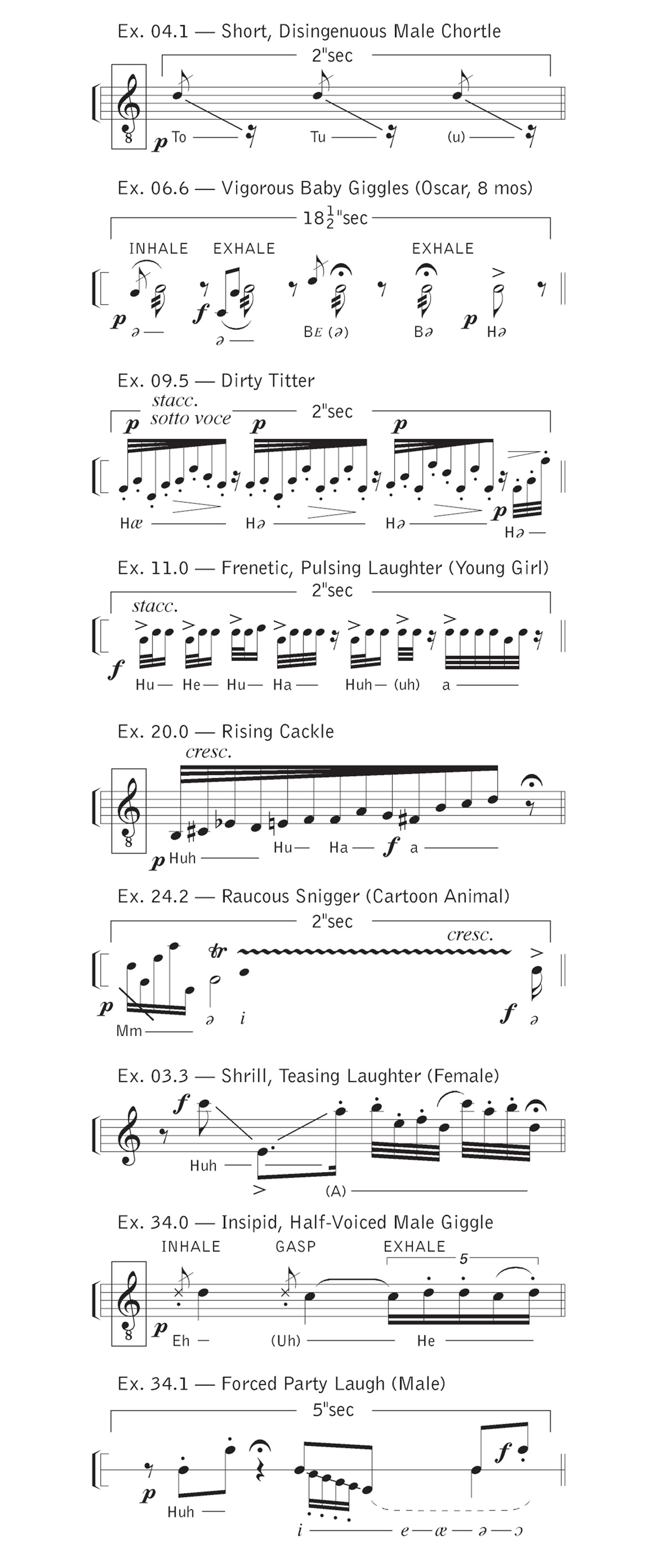Artist Project / Laughter Scores
Dirty titter, raucous snigger
Edward Jessen
I began scoring laughter in 1994, when Jason Griffiths and Alex Gino entered an architectural competition to build a Temple of Laughter, and asked me to contribute. (Their design went on to win.) They explained that their small building, basically a shipping container that could be transported around the country on the back of a truck, would support a kind of “laughter system” which would both encourage visitors to laugh by playing them canned laughter and record their laughter responses as well. The idea was to create a building that would contain an ever-expanding cacophony of laughter.
My job was to make distinctions between the different categories of laughter—the giggle, the guffaw, the bellow, etc.—by recording samples from friends, children, and the TV and then making musical notations of them. It became immediately evident that the process of faithfully transcribing pure sounds of emotion was going to be enormously difficult. Unlike speech, which generally has a decipherable pitch, laughter seemed to be ecstatic, more like the sound of forced air and involuntary pitchless spasms. Therefore, with each example of laughter I resolved to take impressions of the vowels, the speeds and the curvature in the way that a court artist might quickly sketch a villain during a big murder trial—not the deepest likeness, yet not unrecognizable either. The impressions are based on a series of closer and closer approximations. A person should be able to look at the notes and execute the same sounds in an accurate and, with any luck, emotive manner.

Edward Jessen’s music centers on perceptible processes and audible phenomena, both foregrounded explicitly to focus the basic sensation of listening. Recent scores have been for the English Chamber Orchestra Ensemble, the Orchestra of the Opera North and for the Hilliard Ensemble. He is published by Decipherer (Arts) Press Ltd, London.
Spotted an error? Email us at corrections at cabinetmagazine dot org.
If you’ve enjoyed the free articles that we offer on our site, please consider subscribing to our nonprofit magazine. You get twelve online issues and unlimited access to all our archives.